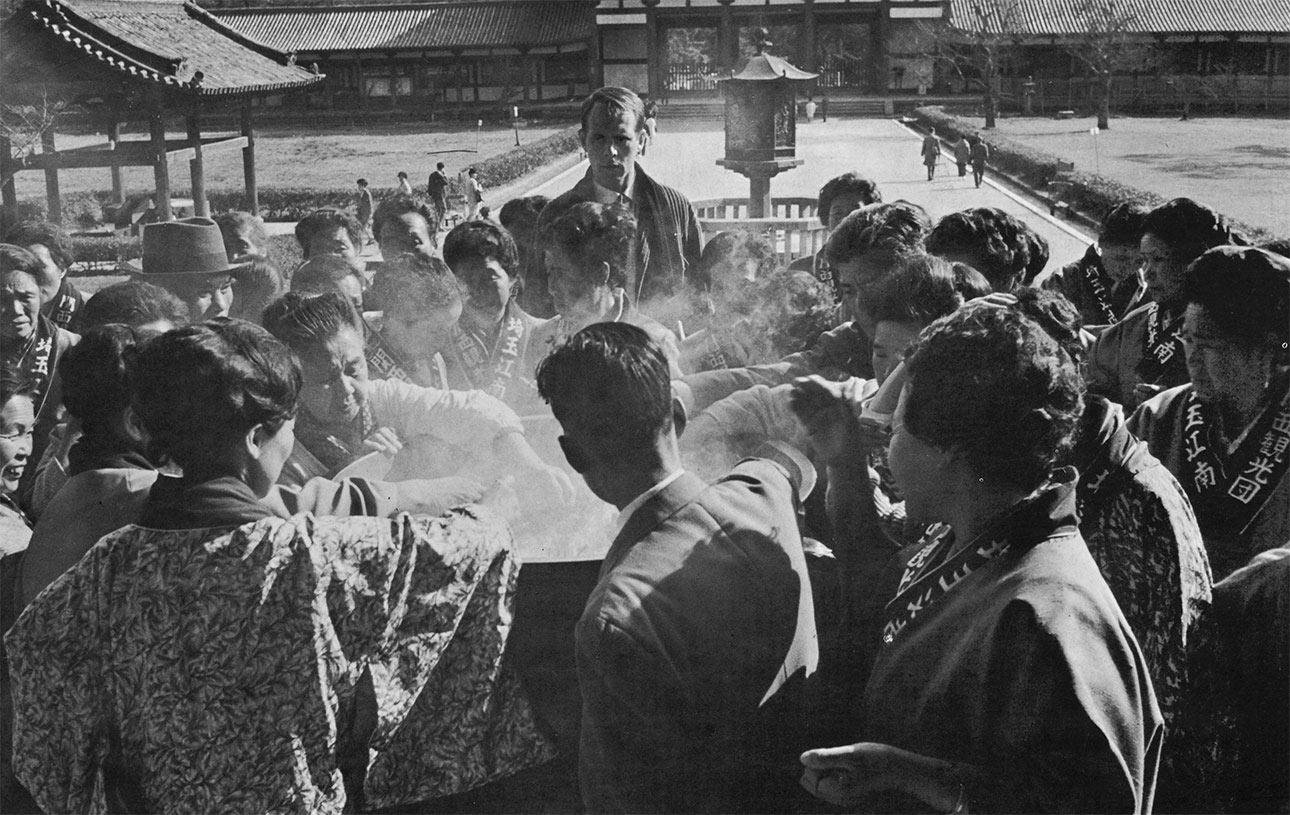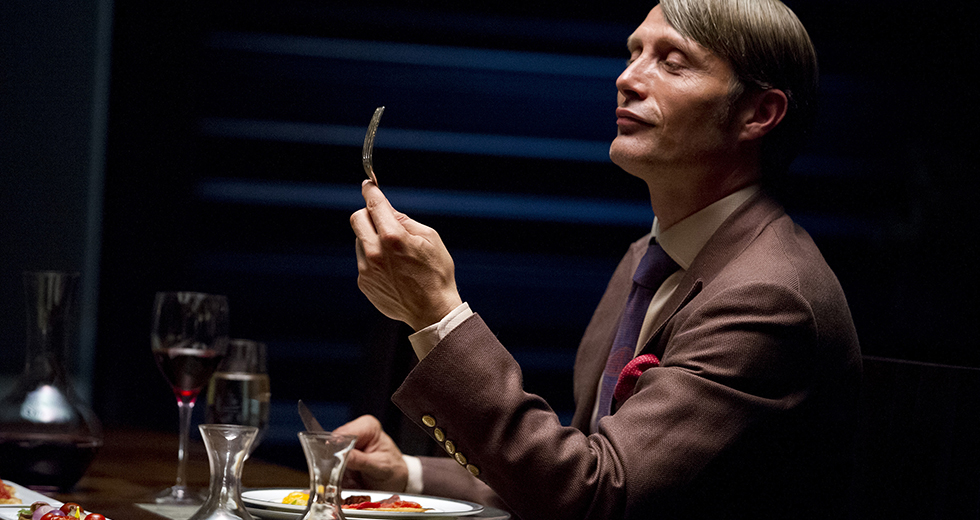How John Cage Inspired Tōru Takemitsu to Embrace Japan
Jeremy D. Larson explains the special relationship between two of the 20th century’s most important composers
Listen to Undertones, Jeremy D. Larson’s RBMA Radio show, and its episode devoted to wildly inventive Japanese composers here
Western music is lined with composers who have borrowed from other cultures. Debussy and Ravel took liberally from the timbres of Javanese gamelan music; Steve Reich travelled to Ghana and brought back the polyrhythms of Ewe drumming; David Byrne’s ear for the babel of Africa has defined the better part of his career; Diplo loves him some Jamaican dancehall.
The roundabout way by which Tōru Takemitsu found harmony in the works of John Cage may at first blush seem to buck the tradition of a Western composer sprinkling in some flavors of the Other. In 1992, a few years before his death, Takemitsu wrote: “I must thank John Cage, because he shifted my attention to the positive sides of Japanese culture; I had long regarded ‘Japan’ and anything related to it as things that are supposed to be rejected.”
But there’s something more complex going on here. While the origins of the Cage-Takemitsu relationship are rooted both in exceptional American acts of war and a history of rigid Japanese imperialism, it remains a portrait of how art blooms when two cultures, once defined by conflict, meet soul to soul in the aftermath.
As Tokyo burned, the literal and figurative cacophony made Takemitsu averse to the tonalities of Japanese music and its attendant timbres.
Tōru Takemitsu was 11 when World War II began in 1941. These were miserable and “bitter” times for him. He grew up while a hyper-nationalistic and often brutal imperial government was ending, Tokyo was being firebombed and Americans began to occupy the country.
As Tokyo burned, the literal and figurative cacophony made Takemitsu averse to the tonalities of Japanese music and its attendant timbres. After the war, when he was in and out of music school in Tokyo, Takemitsu grew fond of a wide range Western composers, from Webern to Messiaen. He was enamored by new colors and modes.
At this point, he didn’t own a piano, so he carried around in his pocket an octave’s worth of keys he drew on a piece of paper and composed from that. He wrote profusely, working with the outré anti-establishment group Jikken Kōbō, composing small musique concrète pieces and making money writing music for film, television and radio. In the early ’50s, he was bedridden with tuberculosis, yet still, by one account, fled to an orchestra hall to conduct a performance. But he still had not found his voice.
In New York, a few years earlier, John Cage was struggling professionally in the same way. Manhattan’s exclusively Asian bookstore, Orientalia, relocated to the Village in 1948, and became a frequent hangout. The books that were coming back from the East were shedding the cheap stereotypes of Japanese culture in favor of deep history and poetic philosophy. By the early ’50s, Zen Buddhism was inching into the cultural zeitgeist, a fad to some, a new religion to others and a profound pathway for Cage. When famed poet and Zen philosopher D.T. Suzuki was ferried over to America to give lectures for Ivy League schools around the country in 1951, Zen officially invaded the West, and Cage most of all.
As Kay Larson writes in her terrific book, Where the Heart Beats, Cage’s discovery of Suzuki freed him from the tangles of his mind. Cage studied with Suzuki for years at Columbia University, and became one of the first Western composers to incorporate not just timbres and rhythms, but the heart-level philosophy of a foreign culture into his music. By the late ’50s and ’60s, chance and indeterminacy were core to his work, and slowly it began to trickle across the ocean to Europe and back to Japan through Takemitsu’s friend and composer Toshi Ichiyanagi, who returned from studying music in America in 1961 and gave the first Japanese performance of Cage’s Concert for Piano and Orchestra at the Sogetsu Art Center. Takemitsu was in the audience. He was bewitched.
Takemitsu began to compose graphic scores, indeterminate pieces of experimental Western composition like Ring (1961), Corona (1962) and Arc for Strings (1963). He also began to explore traditional Japanese instruments like the biwa lute and the shakuhachi bamboo flute, including them both in the soundtrack to Masaki Kobayashi's 1962 film, Harakiri, as well as one of his more famous film scores, the disquieting and woozy Woman in the Dunes (1964). The score for the latter alternately howls like wind off a beach, yet is so specific as to highlight every little granule of sound.
Takemitsu reframed traditional Japanese instruments to rid them of their martial overtones and reconnect them to the music of nature and silence. His film and orchestra scores embodied the Japanese ideas of sawari and ma. In musical terminology, sawari refers to a single harsh sound (the pinched twang of a biwa is supposed to reflect the chirp of a cicada and the breathy, fluttery sound of a shakuhachi means to imitate the sounds of wind blowing through bamboo). In brief, ma is meant to signify the silence after a sound. (The definition of ma is, like Zen, too layered to delve deeply into here. Takemitsu has said that the concept of ma can be music philosophy unto itself. It is a bridge between two worlds, the space between, a vessel into which a spirit enters.) This is a vast reduction of those two words and their meaning, but listen to the sawari of the plectrum on the string of the biwa and the ma that exists in its wake. They work in tandem, defining one another as a unit, much like the silent philosophy of Wandelweiser.
The pinnacle interaction of all these aesthetics occurs in a Takemitsu masterpiece, November Steps, commissioned by the New York Philharmonic in 1967. The piece features a long interaction between the biwa and the shakuhachi, interspersed with inconsonant flourishes from a full Western orchestra. For the biwa and shakuhachi players, the score is mostly graphic, like Cage’s. Takemitsu notates only the pitch for the two soloists, leaving the phrasing and rhythm up to the performers.
The two soloists seem to seek refuge from the timpani and strings, as if they are being tossed in the whorls of a raging ocean of sound. In contrast to the biwa and shakuhachi, the orchestra sounds mechanical, almost perfunctory to the earthy sawari and its concomitant ma. It is the sound of an artist rediscovering his voice in the abyss, the fledgling noise of instinctual sound created by the lute and bamboo flute. It is the sound of a composer coming to life.
As I relayed it here, this is just a fraction of Takemitsu’s story. He was a hugely prolific composer, writing hundreds of pieces for film, television, radio, orchestra and ensemble. He and Cage would become fast friends and colleagues for the rest of their life, writing music full of chaos and beauty, connected across an ocean and through a war by fate and devotion to music and the silence that comes after it.
In thinking about Cage and Takemitsu, it’s important to remember – now especially – what we lose when cultures are stymied by the state, whether psychologically or physically. It’s detrimental to not only families and employers, but to the art we claim to celebrate together. What lays beneath each human fleeing religious persecution or seeking a new life in a free country is a well of history, a grand reservoir rich with thought and religion that could shock our culture into rediscovering itself, or even just inspire a small scene of musicians to think about music through a new lens. What awaits a truly pluralistic nation are a million exchanges like Cage and Takemitsu.

